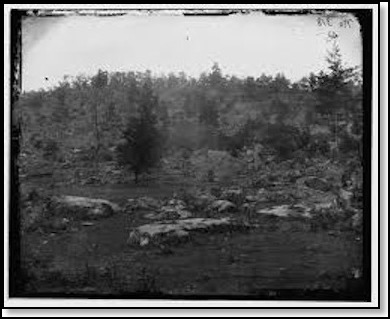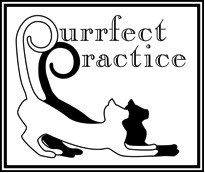Civil War
Stillness At Appomattox
Bob and I were staying at a lovely B&B just outside Charlottesville, VA while doing a drive around northern Virginia. We were seeing historic sights, beautiful countryside, and battlefields. At one breakfast there, we heard another party at the B&B talk about a visit to the Appomattox battlefield area and where Lee surrendered to Grant at the end of the Civil War. They commented that the area seemed to have an extra "quiet" and "hush", likely a stillness to it due to the significance of the surrender. Bob and I talked and decided it was worth a 3 hour drive to the location to see it. It was definitely worth a visit and there was a stillness to it.
Here is info on the site from the list of battlefields to visit:
No battlefield tour is complete without a visit to the village of Appomattox Court House, the place where the American Civil War ended on April 9, 1865. After a series of battles known as the Appomattox Campaign, which engaged almost 90,000 soldiers, Confederate General Robert E. Lee officially surrendered to Union General Ulysses S. Grant at McLean House, bringing an end to the war. The park covers approximately 1,800 acres and encompasses many of the village’s original structures and over two dozen restored buildings, including a reconstruction of the McLean House. Visitors can walk on the same dirt road where Lee’s army folded their flags, visit the Confederate cemetery, and discover the quaint village of Appomattox Court House.
Our photo of McLean House.
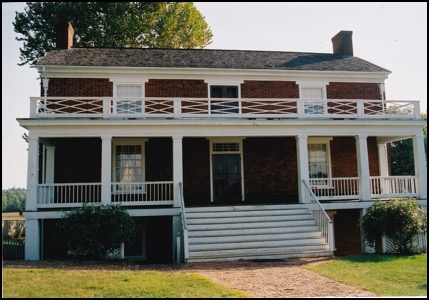
An old photo from an internet site.
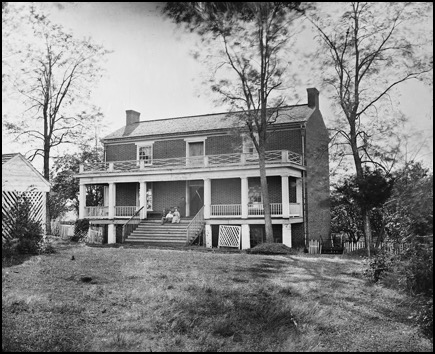
Here is info on the site from the list of battlefields to visit:
No battlefield tour is complete without a visit to the village of Appomattox Court House, the place where the American Civil War ended on April 9, 1865. After a series of battles known as the Appomattox Campaign, which engaged almost 90,000 soldiers, Confederate General Robert E. Lee officially surrendered to Union General Ulysses S. Grant at McLean House, bringing an end to the war. The park covers approximately 1,800 acres and encompasses many of the village’s original structures and over two dozen restored buildings, including a reconstruction of the McLean House. Visitors can walk on the same dirt road where Lee’s army folded their flags, visit the Confederate cemetery, and discover the quaint village of Appomattox Court House.
Our photo of McLean House.

An old photo from an internet site.

Comments
Gettysburg-The Turning Point
20/04/24 15:40 Filed in: History
Bob and I visited Gettysburg one summer and made the driving tour around the town and battlefield. It is an amazing location and story of a battle that changed a war, then history.
We stayed at a lovely B&B there and had dinner with a person Bob knew from his work in logistics. It would be great to go back there. Here is more on Gettysburg…
"Those immortal words spoken by President Abraham Lincoln in the Gettysburg Address — “four score and seven years ago…” — were inspired by a major turning point in the American Civil War. The Battle of Gettysburg, which took place from July 1 to 3, 1863, marked the end of General Robert E. Lee’s second failed invasion of the North. The Union victory defeated the Confederacy’s ambition of bringing the war to a swift end, but with over 51,000 casualties, the battle stands as the deadliest in the war."
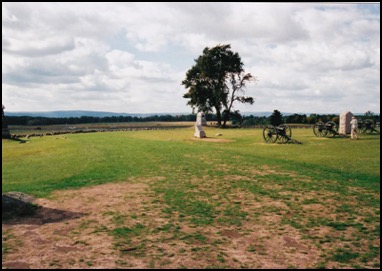
The Angle
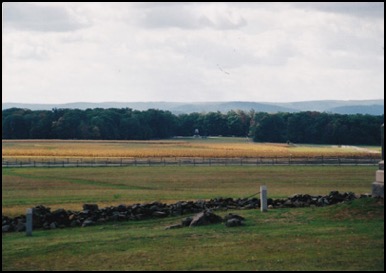
Seminary Ridge
We stayed at a lovely B&B there and had dinner with a person Bob knew from his work in logistics. It would be great to go back there. Here is more on Gettysburg…
"Those immortal words spoken by President Abraham Lincoln in the Gettysburg Address — “four score and seven years ago…” — were inspired by a major turning point in the American Civil War. The Battle of Gettysburg, which took place from July 1 to 3, 1863, marked the end of General Robert E. Lee’s second failed invasion of the North. The Union victory defeated the Confederacy’s ambition of bringing the war to a swift end, but with over 51,000 casualties, the battle stands as the deadliest in the war."

The Angle

Seminary Ridge
Fort Sumter-Charleston
30/03/24 14:20 Filed in: History | United States of America
We got to see Fort Sumter National Monument, not by a regular tour, but by a friend of a friend who took us out be boat to the small island outcropping. We clambered up some stairs above the Charleston harbor waters. It was a glorious day to visit.
More on Fort Sumpter:
On April 12, 1861, Confederate forces fired on Fort Sumter — marking the beginning of the American Civil War. Fort Sumter and Fort Moultrie National Historical Park protects both these historical forts standing guard over Charleston Harbor, in addition to the Charleston Light and Liberty Square. Fort Sumter is accessible only by the official ferry boat, departing from Patriots Point Naval and Maritime Museum and Fort Sumter Visitor Center. There, you can learn about how the fort was built and the events leading to the 1861 battle. Activities at the fort include rangers talks and — for visitors taking the first and last ferries — the raising and lowering of the American flag.
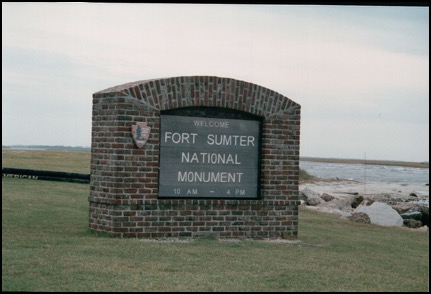
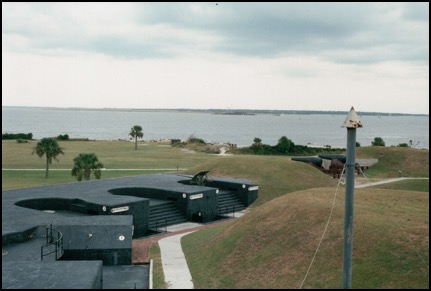
More on Fort Sumpter:
On April 12, 1861, Confederate forces fired on Fort Sumter — marking the beginning of the American Civil War. Fort Sumter and Fort Moultrie National Historical Park protects both these historical forts standing guard over Charleston Harbor, in addition to the Charleston Light and Liberty Square. Fort Sumter is accessible only by the official ferry boat, departing from Patriots Point Naval and Maritime Museum and Fort Sumter Visitor Center. There, you can learn about how the fort was built and the events leading to the 1861 battle. Activities at the fort include rangers talks and — for visitors taking the first and last ferries — the raising and lowering of the American flag.


Antietam Battlefield
29/03/24 10:01 Filed in: History | United State of America
Bob and I have visited the Antietam National Battlefield near Sharpsburg, MD. It was quite the experience driving along the points of interest and listening to the tour CD. We could get a great sense of the battle and loss of so many soldiers lives. I have different photos from the visit, one of my favorites is a view of Bloody Lane. I have used this photo as a screenshot backdrop for computers.
Here is some additional information about Antietam.
Known as the Battle of Sharpsburg in some Southern states, the Battle of Antietam marked the deadliest single day of combat in American history. Part of the Maryland Campaign, the battle was the first field army engagement to take place on Union soil in the Eastern Theater of the Civil War. It not only put an end to the first invasion into the North by the Confederate Army of Northern Virginia, but also paved the way for Abraham Lincoln to issue the preliminary Emancipation Proclamation.
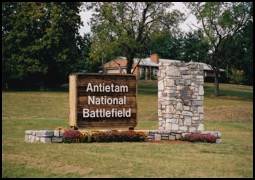
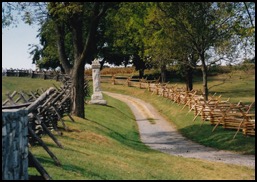
Here is some additional information about Antietam.
Known as the Battle of Sharpsburg in some Southern states, the Battle of Antietam marked the deadliest single day of combat in American history. Part of the Maryland Campaign, the battle was the first field army engagement to take place on Union soil in the Eastern Theater of the Civil War. It not only put an end to the first invasion into the North by the Confederate Army of Northern Virginia, but also paved the way for Abraham Lincoln to issue the preliminary Emancipation Proclamation.


Six Must See Battlefields
26/02/24 18:02 Filed in: History
While reading through a Daily Passport email, one of their story leads was about six must-see battlefields in the United States. We have visited all six at some point. I will start with the last one we visited last October, Shiloh Battlefield, located in southern Tennessee just over the Tennessee-Mississippi border. The largest loss of life in a battle in the U.S. and in some respects a draw between the Union and Rebel forces.
From the article:
The Battle of Shiloh, also known as the Battle of Pittsburg Landing, was one of the most significant battles in the Mississippi Valley Campaign of the Civil War. The Union’s victory on April 7, 1862, came at a high cost, resulting in more casualties than in all of America’s previous wars combined. Occupying over 5,000 acres, Shiloh National Military Park offers visitors the chance to discover several historic sites. These include the Corinth Battlefield Unit, which preserves the Siege and Battle of Corinth, and the Shiloh National Cemetery, the resting place of around 4,000 fallen soldiers. Also found here are the Shiloh Indian Mounds, an archeological remnant of the South Appalachian Mississippi culture that lived in the area around 1200 CE. A great way to explore the park is by driving its 12.7-mile, 22-stop self-guided tour of the battlefield. Alternatively, visitors can hike along trails or ride a bicycle or e-bike around the paved roads. Whichever way you get around, you’ll get the chance to spot local wildlife, including 186 bird species, such as the majestic bald eagle and great-horned owl.
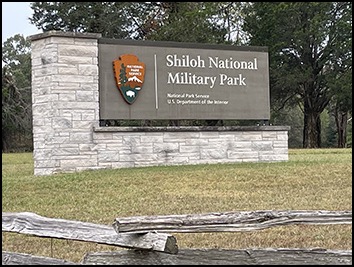
From the article:
The Battle of Shiloh, also known as the Battle of Pittsburg Landing, was one of the most significant battles in the Mississippi Valley Campaign of the Civil War. The Union’s victory on April 7, 1862, came at a high cost, resulting in more casualties than in all of America’s previous wars combined. Occupying over 5,000 acres, Shiloh National Military Park offers visitors the chance to discover several historic sites. These include the Corinth Battlefield Unit, which preserves the Siege and Battle of Corinth, and the Shiloh National Cemetery, the resting place of around 4,000 fallen soldiers. Also found here are the Shiloh Indian Mounds, an archeological remnant of the South Appalachian Mississippi culture that lived in the area around 1200 CE. A great way to explore the park is by driving its 12.7-mile, 22-stop self-guided tour of the battlefield. Alternatively, visitors can hike along trails or ride a bicycle or e-bike around the paved roads. Whichever way you get around, you’ll get the chance to spot local wildlife, including 186 bird species, such as the majestic bald eagle and great-horned owl.

Gettysburg Address at 160 Years
20/11/23 08:18 Filed in: History
Yesterday was the 160th anniversary of Abraham Lincoln's Gettysburg Address commemorating the loss of soldiers' lives at battle of Gettysburg in Pennsylvania. It is considered the best speech of any President and was only 2 minutes long. The speech was actually ridiculed for being short at that time. History has shown differently. The address:
Four score and seven years ago our fathers brought forth on this continent, a new nation, conceived in Liberty, and dedicated to the proposition that all men are created equal.
Now we are engaged in a great civil war, testing whether that nation, or any nation so conceived and so dedicated, can long endure. We are met on a great battle-field of that war. We have come to dedicate a portion of that field, as a final resting place for those who here gave their lives that that nation might live. It is altogether fitting and proper that we should do this.
But, in a larger sense, we can not dedicate — we can not consecrate — we cannot hallow — this ground. The brave men, living and dead, who struggled here, have consecrated it, far above our poor power to add or detract. The world will little note, nor long remember what we say here, but it can never forget what they did here. It is for us the living, rather, to be dedicated here to the unfinished work which they who fought here have thus far so nobly advanced. It is rather for us to be here dedicated to the great task remaining before us — that from these honored dead we take increased devotion to that cause for which they gave the last full measure of devotion — that we here highly resolve that these dead shall not have died in vain — that this nation, under God, shall have a new birth of freedom — and that government of the people, by the people, for the people, shall not perish from the earth.
Four score and seven years ago our fathers brought forth on this continent, a new nation, conceived in Liberty, and dedicated to the proposition that all men are created equal.
Now we are engaged in a great civil war, testing whether that nation, or any nation so conceived and so dedicated, can long endure. We are met on a great battle-field of that war. We have come to dedicate a portion of that field, as a final resting place for those who here gave their lives that that nation might live. It is altogether fitting and proper that we should do this.
But, in a larger sense, we can not dedicate — we can not consecrate — we cannot hallow — this ground. The brave men, living and dead, who struggled here, have consecrated it, far above our poor power to add or detract. The world will little note, nor long remember what we say here, but it can never forget what they did here. It is for us the living, rather, to be dedicated here to the unfinished work which they who fought here have thus far so nobly advanced. It is rather for us to be here dedicated to the great task remaining before us — that from these honored dead we take increased devotion to that cause for which they gave the last full measure of devotion — that we here highly resolve that these dead shall not have died in vain — that this nation, under God, shall have a new birth of freedom — and that government of the people, by the people, for the people, shall not perish from the earth.
The Graves-Shiloh Battlefield Cemetery
One strikingly serene and beautiful spot at the Shiloh Battlefield National Park was the cemetery. The grass and trees on the rolling terrain evoked the sadness of the loss of soldiers on both sides of the fight. There is a larger memorial than in the accompanying photo that announces the location of General Grant's headquarters and tent in that location. Along this area was the Union Army's center which they needed to hold in the face of Confederate troops. The Union almost lost this battle though they came back when additional troops arrived from other parts of Tennessee. Both sides battled to a draw and lived to fight another day or 3 years.
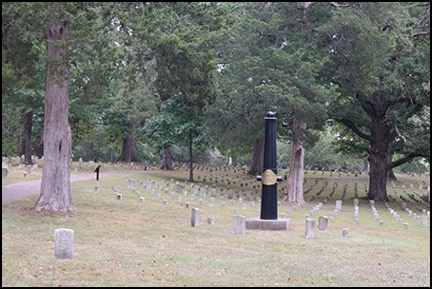

General Albert Sydney Johnston At Shiloh
23/10/23 08:32 Filed in: History
One of the Shiloh Battlefield tour stops (#17) Bob and I visited during our trip to Shiloh was where General Albert Sydney Johnston died during the battle. He had a bullet wound to his leg and was unaware he was bleeding heavily into his boot until he collapsed. He was considered one of the top generals with General Robert E. Lee and his loss was devastating to the Confederate Army. He was a measured military man with significant knowledge of the battlefield. Below is the monument at Shiloh to where he died. Information about him and the battle can be found here and here.
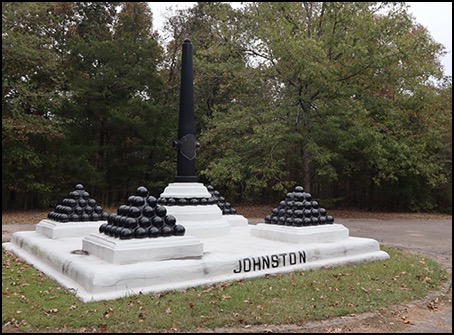

Shiloh Civil War Battlefied
Bob and I just got back from Memphis Tennessee earlier this week. One week ago we drove 2 hours east to the Shiloh National Park Battlefield near Shiloh TN. This covers a lot of area around the town and west of the Tennessee River. This is probably 15-20 miles north of Corinth, MS where the Confederate forces were bivouacked. Corinth was a major railroad connection in the South and one of the targets of the Union army under General Grant.
We had a great trip and saw a bit of the area while there. We also watched a 30 minutes film at the Visitor's Center while there.
Here is the sign for the entrance to the visitor's part of the park.

We had a great trip and saw a bit of the area while there. We also watched a 30 minutes film at the Visitor's Center while there.
Here is the sign for the entrance to the visitor's part of the park.

Grave of John Wilkes Booth
19/01/17 10:27 Filed in: History
John Wilkes Booth is infamous in history for his assassination of Abraham Lincoln. After a large manhunt through Maryland and Virginia, he was cornered and killed. He was eventually buried in the family plot located in Baltimore. More found here with pictures of the gravesite.
"The assassin’s body was transported to Baltimore, the city of his youth, and buried in the Booth family plot in Green Mount Cemetery. The family plot is easy to find due to Junius Brutus Booth’s towering obelisk. But the Booth family, John Wilkes’ brother Edwin in particular, believed that an elaborate headstone for John Wilkes might attract unwanted attention and vandalism. Visitors today believe the small, plain, unmarked headstone denotes John Wilkes Booth’s final resting spot. In lieu of flowers or stones, people leave pennies behind on the headstone, as if to give Lincoln the final word."
"The assassin’s body was transported to Baltimore, the city of his youth, and buried in the Booth family plot in Green Mount Cemetery. The family plot is easy to find due to Junius Brutus Booth’s towering obelisk. But the Booth family, John Wilkes’ brother Edwin in particular, believed that an elaborate headstone for John Wilkes might attract unwanted attention and vandalism. Visitors today believe the small, plain, unmarked headstone denotes John Wilkes Booth’s final resting spot. In lieu of flowers or stones, people leave pennies behind on the headstone, as if to give Lincoln the final word."
Digitally Archiving Union Telegrams
02/10/16 16:31 Filed in: History
Work is being done to bring thousands of telegrams from the Union side of the Civil War into the digital age. More about the work here.
<<Today we use our digital devices to text, tweet, and email, but during the Civil War, telegrams were deployed to do things like request artillery or even to say “We have met with a serious disaster.” Now, a new project is bringing thousands of telegrams that carried information between Union officers, Abraham Lincoln, and his cabinet into the digital age.>>
<<Today we use our digital devices to text, tweet, and email, but during the Civil War, telegrams were deployed to do things like request artillery or even to say “We have met with a serious disaster.” Now, a new project is bringing thousands of telegrams that carried information between Union officers, Abraham Lincoln, and his cabinet into the digital age.>>
Yom Kippur War and Gettysburg
22/09/15 19:28 Filed in: History
Death and the Civil War
21/05/15 16:23 Filed in: History
A culture of death seemed to surround the people living at the time of America's Civil War. Life was harder and many children did not live to adulthood. Many adults died at a much earlier age than in current times. This article reviews two new books that address why that may have been such a presence in the culture of those time.
Reconstruction
20/05/15 16:17 Filed in: History
Mackubin Thomas Owens, former military, writes interesting articles about battles and aspects of the Civil War. This time he has covered the period post Civil War and what it meant to the rebuilding of a broken United States. These were dark days in our history and parts of which carry through to this day. Further reading of this article can be found here.
Civil War Songs at the New
27/04/15 20:19 Filed in: Interests
Another Appomattox View
15/04/15 19:56 Filed in: History
Lincoln's Assassination
14/04/15 19:52 Filed in: History
Today is the sesquicentennial of Lincoln's assassination. We have been to Ford's Theater and have seen the room across the street where Lincoln died. So sad.
Interesting to contemplate if what if Lincoln had lived? Here are some thoughts.
As America remembers the events at Ford's Theater 150 years ago tonight, many are wondering how things might have been different had John Wilkes Booth missed his shot, or if President Lincoln had just stayed home instead of following his wife Mary's wishes for a night of entertainment.
Would Lincoln have been a successful second-term president? Would the reconstruction of the South been handled better with a strong and powerful leader such as Lincoln in charge? Would western cities like Denver or Phoenix have become home to free slaves and perhaps a new, more powerful black middle class? Or would Lincoln have become like Winston Churchill, a war hero who was later tossed out by voters when Great Britain's economy turned sour?
Interesting to contemplate if what if Lincoln had lived? Here are some thoughts.
As America remembers the events at Ford's Theater 150 years ago tonight, many are wondering how things might have been different had John Wilkes Booth missed his shot, or if President Lincoln had just stayed home instead of following his wife Mary's wishes for a night of entertainment.
Would Lincoln have been a successful second-term president? Would the reconstruction of the South been handled better with a strong and powerful leader such as Lincoln in charge? Would western cities like Denver or Phoenix have become home to free slaves and perhaps a new, more powerful black middle class? Or would Lincoln have become like Winston Churchill, a war hero who was later tossed out by voters when Great Britain's economy turned sour?
More on Appomattox
10/04/15 07:01 Filed in: History
Here is another well written piece about the surrender at Appomattox. There are many good writers out there who can bring that day 150 years ago into the present.
One hundred and fifty years ago today, Robert E. Lee acknowledged the inevitable.
His forces shrunken and surrounded, his provisions dwindling rapidly, the Union Army pressing the attack, Lee first acknowledged to himself, then to his fellow Confederate officers, and finally to Ulysses Grant that the South was defeated.
“The time has come,” Lee told aide-de-camp Walter Herron Taylor, “for capitulation.”
“Well, sir,” Col. Herron replied, “speaking only for myself; to me, any other fate is preferable.”
One hundred and fifty years ago today, Robert E. Lee acknowledged the inevitable.
His forces shrunken and surrounded, his provisions dwindling rapidly, the Union Army pressing the attack, Lee first acknowledged to himself, then to his fellow Confederate officers, and finally to Ulysses Grant that the South was defeated.
“The time has come,” Lee told aide-de-camp Walter Herron Taylor, “for capitulation.”
“Well, sir,” Col. Herron replied, “speaking only for myself; to me, any other fate is preferable.”
Appomattox at 150
09/04/15 07:00 Filed in: History
Today is the sesquicentennial of the surrender at Appomattox. We have visited this Civil War site which is not as heavily visited as many others. Bob and I were visiting Charlottesville in Virginia and were staying at a lovely B&B, At breakfast we heard some other people talking about how they had visited and felt the quiet and power of the place. We dropped our plans for the day and drove south to Appomattox. We have always been glad that we did. There is a stillness there and you can just envision all the soldiers slowly marching and waiting for the ending of a war that killed so many men, so many dreams. Here is a synopsis of different articles about this day.
Forgotten Civil War Sites
I love to travel and go to Civil War sites. I especially like to find small gems of historical sites that don't always attract crowds. Bob and I have been to Gettysburg, Appamatox, Fredricksburg, Antietam, Vicksburg as some of the biggies. They are special. Now it is great to find this article about some forgotten much lesser known battlefields. Check it out here.
Robert E. Lee
19/03/15 16:28 Filed in: History
One cannot read about the Civil War and not read quite a bit about Robert E. Lee. His background is fascinating and he had the chance to be a general in the Northern Army. Most likely THE General in charge. What Ifs can ponder how many fewer men and less property destruction would have occurred if he had done so. What would have been like to be in the presence of the top 3 men of that time - Lincoln, Grant, and Lee? I would have like to have sat in one some of their meetings. They all are certainly people I would like to have known. A new book is out looking how Lee squandered his legacy and connection to America's most revered figure, George Washington. A review can be found here.
Lincoln's Constant Threat
17/03/15 16:09 Filed in: History
Abraham Lincoln faced threats through out his later political life. Certainly around his election, first inauguration, and his years as President. Evidently, he was almost assassinated 9 months before he was assassinated. He still lived his life more in the open and did not shut himself away from meeting the public. It is sad that such a great man, IMO, engendered such hatred. There was much to learn from him than hate him. Read more about this episode here.
In 1864,
"It was during a lonely ride back to the Soldiers’ Home one night in August when an attempt was made on the President’s life. Riding slowly on the road that led to the entrance to the grounds, a rifle shot from approximately fifty yards away startled his horse; Old Abe, the horse, took off at what the President called “break-neck speed [which] unceremoniously separated me from my eight-dollar plug hat, with which I parted company without any assent, express or implied.” "
In 1864,
"It was during a lonely ride back to the Soldiers’ Home one night in August when an attempt was made on the President’s life. Riding slowly on the road that led to the entrance to the grounds, a rifle shot from approximately fifty yards away startled his horse; Old Abe, the horse, took off at what the President called “break-neck speed [which] unceremoniously separated me from my eight-dollar plug hat, with which I parted company without any assent, express or implied.” "
Lincoln's Second Inaugural
04/03/15 07:17 Filed in: History
Lincoln's Second Inaugural Address is considered a masterpiece of political speech. It was all of 700 words, few compared to current politicians who love to hear their own voice. It also pealed with Biblical cadences and themes.
"A hundred and fifty years ago today, as the sun broke through the clouds shortly after noon on a wet Washington day, Abraham Lincoln, with one hand raised and the other on an open Bible, took the presidential oath of office for the second time. The speech he just gave had been received by an enthusiastic crowd on the East Portico of the U.S. Capitol. It took about six minutes. Then the oath. Then he said, “So help me God,” bent forward, and kissed the Bible to conclude the solemn ceremony.
Delivered in the waning days of a devastating national conflict that claimed the lives of an estimated 750,000 men, the Second Inaugural Address is widely considered among the most eloquent of all presidential utterances. Lincoln himself considered it one of his finest speeches, telling Thurlow Weed it was “perhaps better than . . . anything I have produced.” It is also among the shortest inaugural addresses, a little over 700 words in length. It is a model of profound simplicity."
An article of longer description of the speech is here.
"A hundred and fifty years ago today, as the sun broke through the clouds shortly after noon on a wet Washington day, Abraham Lincoln, with one hand raised and the other on an open Bible, took the presidential oath of office for the second time. The speech he just gave had been received by an enthusiastic crowd on the East Portico of the U.S. Capitol. It took about six minutes. Then the oath. Then he said, “So help me God,” bent forward, and kissed the Bible to conclude the solemn ceremony.
Delivered in the waning days of a devastating national conflict that claimed the lives of an estimated 750,000 men, the Second Inaugural Address is widely considered among the most eloquent of all presidential utterances. Lincoln himself considered it one of his finest speeches, telling Thurlow Weed it was “perhaps better than . . . anything I have produced.” It is also among the shortest inaugural addresses, a little over 700 words in length. It is a model of profound simplicity."
An article of longer description of the speech is here.
Lincoln's Fathers
10/12/14 15:35 Filed in: History
Lincoln once told her law partner that his mother's father was a "well-bred planter or farmer from Virginia". So Lincoln's roots may have been more upscale than originally though as humble. More information can be found in this review of a book, 'Founder's Son'.
Shelby Foote
Potentially the most authoritative collection on the Civil War is the 3 book series of Shelby Foote, The Civil War. We have owned this set for many years. It is well done. This article is a fascinating piece of how a young man became immersed in this subject and spent almost 20 years writing a classic on this particular war. Well done, Shelby, well done indeed.
Why Did the Confederacy Lose?
13/09/14 09:11 Filed in: History
One military historian who I find I like to read has a recent article on his views of why the Confederacy lost the war. His analysis can be found here.
“There is an old story, probably apocryphal, about a meeting of the Southern Historical Society in the years after the Civil War. The topic was Gettysburg — what mistakes, large or small, did the Confederates make that led to the Southern defeat? The debate was heated and furious. Tempers were at the boiling point. Finally, one of the participants turned to George Pickett of “Pickett’s Charge” fame. “George,” he said, “you were there. Why did we lose the battle?” to which Pickett replied, “I always thought the Yankees had something to do with it.””
“There is an old story, probably apocryphal, about a meeting of the Southern Historical Society in the years after the Civil War. The topic was Gettysburg — what mistakes, large or small, did the Confederates make that led to the Southern defeat? The debate was heated and furious. Tempers were at the boiling point. Finally, one of the participants turned to George Pickett of “Pickett’s Charge” fame. “George,” he said, “you were there. Why did we lose the battle?” to which Pickett replied, “I always thought the Yankees had something to do with it.””
Black Soldiers of the Civil War
26/08/14 20:02 Filed in: History
I have tried to highlight different aspects of the Civil War. African-Americans made a significant contribution in the Civil War. A discussion about their involvement by a very good author can be found here.
“At this time 150 years ago, the two major Union army formations — Major General George Meade’s Army of the Potomac and Major General William Tecumseh Sherman’s army group — were tightening their stranglehold on the Confederacy. The former was besieging Petersburg south of the city, trying to thin out Confederate lines and cut the last railroad line connecting Petersburg–Richmond to Georgia and the Carolinas. The latter, having forced the Confederates back on Atlanta, was engaging John Bell Hood in vicious battles at Peachtree Creek, Ezra Church, Dalton, and other places. Atlanta would fall in September, freeing up Sherman for his march to the sea. Petersburg would hold out until March 1865.
While these events were taking place, there were other developments that were less known both at the time and now: among them, the full-scale employment of black soldiers in the service of the Union. The former slave and great abolitionist Frederick Douglass had called for arming blacks at the very outset of the war. Writing in his Monthly of May 1861, Douglass argued that the way “to put an end to the savage and desolating war now waged by the slaveholders, is to strike down slavery itself, the primal cause of that war.” ”
“At this time 150 years ago, the two major Union army formations — Major General George Meade’s Army of the Potomac and Major General William Tecumseh Sherman’s army group — were tightening their stranglehold on the Confederacy. The former was besieging Petersburg south of the city, trying to thin out Confederate lines and cut the last railroad line connecting Petersburg–Richmond to Georgia and the Carolinas. The latter, having forced the Confederates back on Atlanta, was engaging John Bell Hood in vicious battles at Peachtree Creek, Ezra Church, Dalton, and other places. Atlanta would fall in September, freeing up Sherman for his march to the sea. Petersburg would hold out until March 1865.
While these events were taking place, there were other developments that were less known both at the time and now: among them, the full-scale employment of black soldiers in the service of the Union. The former slave and great abolitionist Frederick Douglass had called for arming blacks at the very outset of the war. Writing in his Monthly of May 1861, Douglass argued that the way “to put an end to the savage and desolating war now waged by the slaveholders, is to strike down slavery itself, the primal cause of that war.” ”
Sherman's March to the Sea
06/08/14 11:32 Filed in: History
Gone With The Wind as a book and a movie depict in a bigger-than-life way the destruction of Atlanta and plantation life in the South during the Civil War. General Sherman was and still is considered a destroyer, a butcher per se to many people of Southern heritage. Victor Davis Hanson has an article that discusses the Atlanta campaign the Sherman’s severing of supply lines to make his March to the Sea in Georgia. By doing so, he feels he freed himself to attack the structure and illusion of the plantation elite to prop up the Southern armies to continue a prolonged struggle. By taking the war to those who started it and wished to continue their way of life, he brought the reality of war upon them and possibly shortened the war in the end. Interesting military history.
Vicksburg's Fallen
There was a beautiful cemetery at the Vicksburg battlefield that held many of the fallen from that period of the war. The fallen were laid out amongst trees under rows of white headstones. Very quiet and solemn, along the Mississippi River. The cemetery is next to the Cairo Exhibit. I was able to get a number of photos from there, one showing the headstones while a hawk was taking off above them. Not as close as I would like but interesting.
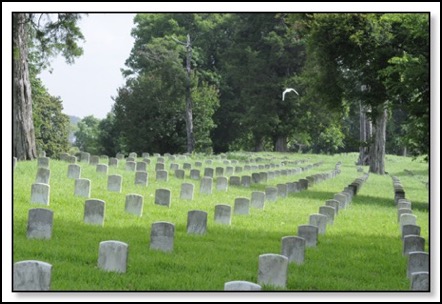

Thayer's Approach at Vicksburg
Much to our surprise while traveling through Vicksburg and visiting the historical battlefield there was seeing the monument and stop for Thayer’s Approach. General John Thayer on the Union side had a critical piece and attack during the Vicksburg siege. His men had to attack the Confederate entrenchments up a steep slope. The following picture gives a description of the attack.
Thayer’s Approach
Thayer’s Approach
A Union General and His Love Story
18/07/14 09:01 Filed in: History
Love and War do often have story lines together and they are not all fiction. A number are real life experiences that would most likely be great films if properly treated. I came across and example just recently about the death of Union General James McPherson. General McPherson was considered one of the best generals of the North during the Civil War. Certainly General Sherman thought so, along with others. McPherson met and fell in love with the daughter of a Southern sympathizer from Baltimore. War and duty kept the two apart and from marrying. Sherman had actually at one point asked McPherson to delay his wedding due to expected heavy campaigning to and around Atlanta. It was during this campaign that McPherson was killed. Emily Hoffman, his fiancé, was left without her love and lived a much longer life, dying unmarried. To read about this story, click here.
Petersburg to Appomattox
13/07/14 07:12 Filed in: History
After traveling in Mississippi and seeing the amazing Vicksburg Civil War battlefield, I find I have to keep posting these amazing summaries of Civil War battles or campaigns. They are well-written and fascinating. Here is one describing the stage of war from Petersburg to Appomattox and how it became a war of attrition. Lee was cagey and desperate, but he did not have the resolve and resources to beat Grant in the long run. Read about this period here.
Part of the Petersburg battlefield, near the Crater.
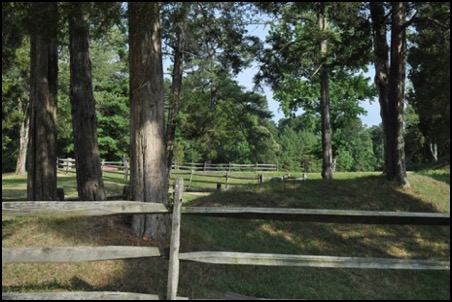
Part of the Petersburg battlefield, near the Crater.

Pickett's Charge
14/07/14 07:05 Filed in: History
It has been said that the long slow slide to the end of the Confederacy started at Gettysburg, especially at Pickett’s Charge. What did Longstreet feel in giving the order to his soldiers that came from General Lee? In the end, how did his men feel about going into battle where a death sentence was common. A great summary description can be found here.
The Union view toward where Pickett’s charge began and the field traversed in between.
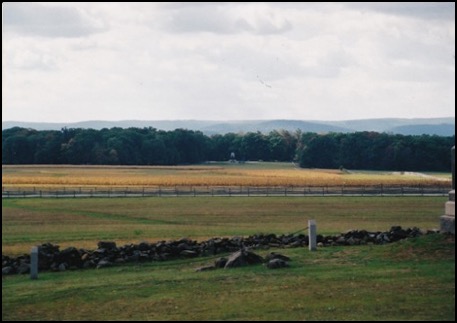
The Union view toward where Pickett’s charge began and the field traversed in between.

Natchez on the Mississippi
01/07/14 18:51 Filed in: Travel
After Vicksburg, we were off to the south to visit the city of Natchez along the Mississippi. We were able to drive the Natchez Trace in part on the way. It is a historical route from the late 1700s to early 1800s route from Nashville, TN to Natchez in Mississippi that Native Americans took, frontiersmen, commerce people, to move into the Spanish owned territory along the Mississippi. The road is beautiful in that it is limited access and highlights the natural aspects of the area geography and plant life. We did get to see one yearling deer along the road as we went.
Our destination was Natchez. The city has a big visitor’s center with a lot of information about the area. Natchez eventually went for the South in the Civil War though from their explanations, many of the business people at that time came from the North and had roots there. They did not favor secession. The city now is a tourist destination and it appears a big spot for many to have a travel destination wedding. It is also a center of antebellum homes that people can tour. We just viewed the outside. A lot of history to be found here.
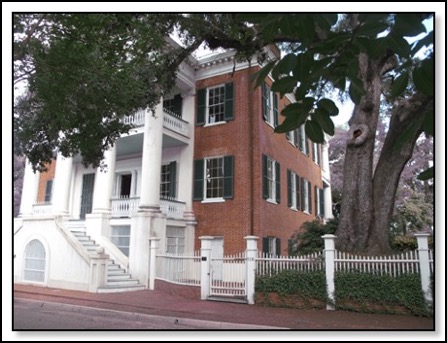
Our destination was Natchez. The city has a big visitor’s center with a lot of information about the area. Natchez eventually went for the South in the Civil War though from their explanations, many of the business people at that time came from the North and had roots there. They did not favor secession. The city now is a tourist destination and it appears a big spot for many to have a travel destination wedding. It is also a center of antebellum homes that people can tour. We just viewed the outside. A lot of history to be found here.

The Cairo
30/06/14 18:35 Filed in: Travel
One of the most remarkable pieces of the Vicksburg Civil War site is the exhibit of the Cairo (pronounced kay-row). It is an ironclad ship that was sunk in 1862 by Confederates as it tried to steam past Vicksburg. The ship was sunk to the bottom of the channel until it was found and raised through extensive work in the 1960s. One of the cannon carriages is maintained in the museum plus a number of items used in the daily lives of the men aboard the ship. The exhibit is under a sail-like cover and open air. It is an amazing piece of history. Seven ironclads were built. This was the only one sunk yet preserved. Those not sunk were de-commissioned and scuttled.
The Cairo
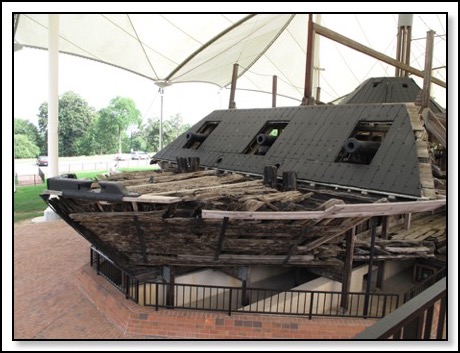
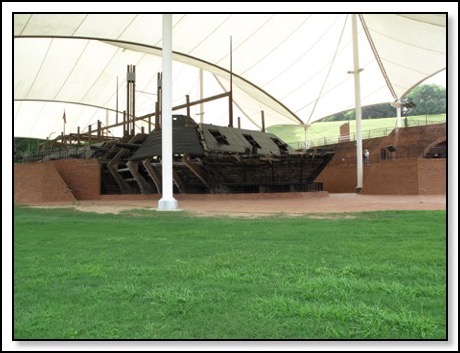
The Cairo


End At Appomattox
02/06/14 20:51 Filed in: History
We recently celebrated and honored Memorial Day. The holiday was started shortly after the Civil War ended. There was a recent article discussing the history of Memorial Day in light of the sacrifices of U.S. ward dead. The article featured a section from James McPherson’s book, “Battle Cry of Freedom”. The piece describes the surrender of Lee to Grant. It was a day of sadness yet honor among armies and troops.
150 years and on
22/05/14 20:41 Filed in: History
This year is the sesquicentennial of one of the biggest year of battles during the Civil War. Much of the Virginia Overland Campaign that Grant led was during this time. The Wilderness, Spotsylvania, Cold Harbor all occurred during this time frame. Other than celebrations at Gettysburg last year, there has not been a lot of memorializing of this anniversary period of the Civil War. A well written and interesting description of this time period and the campaigns in 1864 can be found in the National Review. The author is a retired military officer and has been involved in military history. The article can be found here.
“Following his successes in the West at Vicksburg and Chattanooga, Major General Ulysses S. Grant was appointed by Abraham Lincoln as general in chief of the armies of the United States, and the Senate confirmed him as the first lieutenant general since George Washington. Grant believed that, up to that point, Union armies in different theaters had “acted independently and without concert, like a balky team, no two ever pulling together.”
Accordingly, his strategic plan for 1864 called for putting five Union armies into motion simultaneously against the Confederacy.”
“Following his successes in the West at Vicksburg and Chattanooga, Major General Ulysses S. Grant was appointed by Abraham Lincoln as general in chief of the armies of the United States, and the Senate confirmed him as the first lieutenant general since George Washington. Grant believed that, up to that point, Union armies in different theaters had “acted independently and without concert, like a balky team, no two ever pulling together.”
Accordingly, his strategic plan for 1864 called for putting five Union armies into motion simultaneously against the Confederacy.”
The South Was Right
15/04/14 20:34 Filed in: History
Historians have felt that the Civil War did not have origins in the anti-slavery movement. The South and Northern Democrats believed that the Republicans would aim to free the slaves in they came to power and war commenced.
An article describing this belief is found here.
“Why did the Southern states choose to secede when Abraham Lincoln was elected president in November of 1860? At the time, Southerners attributed “secession winter” to the fear that Lincoln and the Republicans fully intended to make war on slavery, bypassing the Constitution, which left the issue of slavery to the states. Thus, they believed, their only option was to separate from the Union.
Northern Democrats agreed, contending that Republicans intended to circumvent the Constitution’s prohibition against direct federal action against slavery. Agitation by the “Black Republicans” was responsible for the crisis. The Democrats felt vindicated when Republicans refused to compromise on the extension of slavery into the territories. In addition, the Democrats charged, the Republicans intended to refuse to enforce the fugitive slave law that had been passed in 1850 as part of the Great Compromise.”
An article describing this belief is found here.
“Why did the Southern states choose to secede when Abraham Lincoln was elected president in November of 1860? At the time, Southerners attributed “secession winter” to the fear that Lincoln and the Republicans fully intended to make war on slavery, bypassing the Constitution, which left the issue of slavery to the states. Thus, they believed, their only option was to separate from the Union.
Northern Democrats agreed, contending that Republicans intended to circumvent the Constitution’s prohibition against direct federal action against slavery. Agitation by the “Black Republicans” was responsible for the crisis. The Democrats felt vindicated when Republicans refused to compromise on the extension of slavery into the territories. In addition, the Democrats charged, the Republicans intended to refuse to enforce the fugitive slave law that had been passed in 1850 as part of the Great Compromise.”
Grant Not Short of Audacity
25/03/14 07:40 Filed in: History
General U.S. Grant did not run around trumpeting “The Audacity Of Hope”. He just performed his job audaciously and quietly. He often was not always right in his methods in the short term but his perseverance in the long wore down the Southern armies and allowed the Northern armies to win. Another enjoyable article about Grant can be found here in the Weekly Standard.
First Black Medal of Honor Recipient
13/03/14 20:25 Filed in: History
The National Gallery has had a display in recent history of photographs depicting the history and tale of .......
“Tell It With Pride: The 54th Massachusetts Regiment and Augustus Saint-Gaudens' Shaw Memorial," whose purpose is to dispel the shadows of anonymity surrounding a group of soldiers whose July 1863 assault on Fort Wagner in Charleston harbor was a turning point in the war.”
One of the photos shown is of William H. Carney who was a member of the 54th Massachusett’s Regiment and the first African-American recipient of the Medal of Honor. It was bestowed belatedly in 1900. The story of Mr. Carney and the other faces of courage can be found in this article.
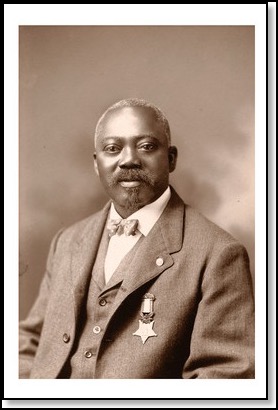
William H. Carney, a member of the 54th Massachusetts Regiment
and the first African-American recipient of the Medal of Honor.
Moorland-Spingarn Research Center, Howard University
“Tell It With Pride: The 54th Massachusetts Regiment and Augustus Saint-Gaudens' Shaw Memorial," whose purpose is to dispel the shadows of anonymity surrounding a group of soldiers whose July 1863 assault on Fort Wagner in Charleston harbor was a turning point in the war.”
One of the photos shown is of William H. Carney who was a member of the 54th Massachusett’s Regiment and the first African-American recipient of the Medal of Honor. It was bestowed belatedly in 1900. The story of Mr. Carney and the other faces of courage can be found in this article.

William H. Carney, a member of the 54th Massachusetts Regiment
and the first African-American recipient of the Medal of Honor.
Moorland-Spingarn Research Center, Howard University
James A. Garfield
19/02/14 10:54 Filed in: History
On an interesting note, there is a recent article that offers some background and history about James A. Garfield, the 20th President of the United State, did not want to be President or at least try to maneuver his way into the position. Garfield was a general in the Civil War and acquitted himself admirably. He went on to become a Senator from Ohio before supporting another as the Republican candidate for the presidency. Garfield was the compromise choice of the convention. He tragically was assassinated by a disgruntled office seeker. With the political egos we have present now, will we ever see an honest person who did not promote their candidacy as President?
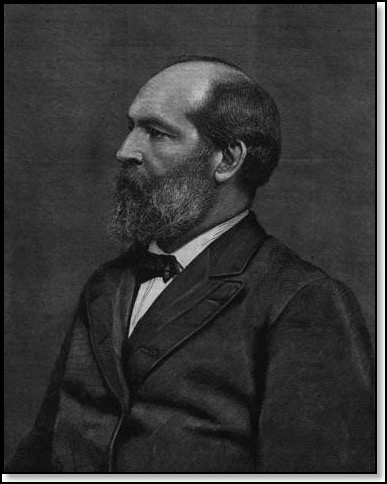

150th Anniversary of Gettysburg Address
19/11/13 10:47 Filed in: History
Today is the 150th Anniversary of Lincoln’s Gettysburg Address. This is the greatest speech ever given in my opinion. Evidently, not so much in contemporary times since a newspaper of a neighboring town just apologized this year for writing an editorial that the speech would not amount to anything and Lincoln should apologize for giving it and withdraw it. Now it is enshrined in the Lincoln Memorial. It would have been a dream come true if Bob and I could have been there for the ceremony.
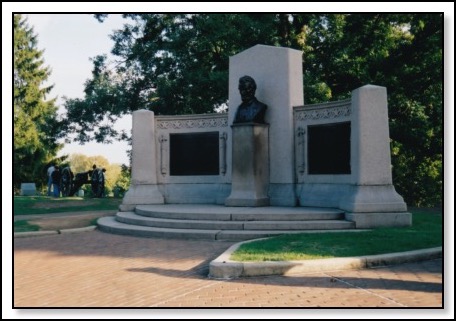

McClellan and Today
20/10/13 12:53 Filed in: History
How does one be much loved or thought fondly of, yet be totally ineffectual and be put aside. Our current President could fit that bill and turn our current military leaders into the same type of people. One person in our history, George McClellan, was much loved by his men and still was a totally poor leader in warfare. He could not make a decision and take action until often odds were turned against him. A couple of articles about McClellan can be found here and here.
The Crater
16/10/13 09:28 Filed in: History
Another spot we have visited in our Civil War site travels is the area around Petersburg Virginia and especially where the Battle of the Crater was fought. It was hoped by the Union Army that they could damage and breach the breastworks of the Confederate Army to achieve a breakthrough. It ended up a debacle and large loss of Union soldiers. Here is a description of the Battle of the Crater. A photo follows of part of the area where the battle took place and how it looks today.
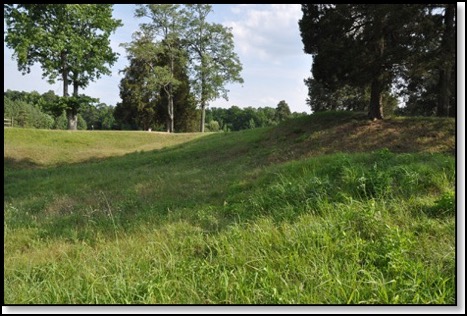

John Brown's Beginnings
15/10/13 08:55 Filed in: History
There is an interesting history piece about the early life of John Brown. It is written by Tony Horwitz who wrote “Confederates in the Attic”. The article gives some sense of why John Brown was an anti-slavery person with strong views on the issue. Bob and I have visited Harper’s Ferry and toured the town. We have seen the armory where John Brown and his sons attacked and were subsequently defeated and rounded up by Colonel Robert E. Lee.
A main street in Harper’s Ferry, looking toward the river and the armory would be to the right at the end.
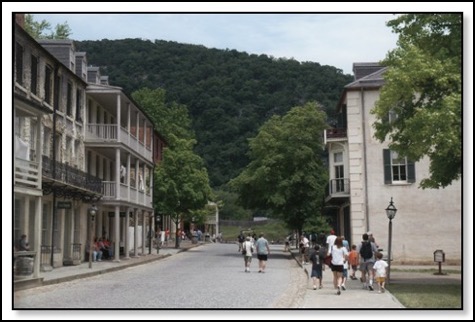
A main street in Harper’s Ferry, looking toward the river and the armory would be to the right at the end.

Colorized Civil War Photos
07/10/13 09:45 Filed in: History
Two individuals, one from Great Britain and the other from Denmark, have developed a method to colorize photos from the Civil War. They really have brought that part of history to life and made it even more enjoyable and interesting. The article that brought it to my attention is here. They have links to other articles where additional photos can be found.
Happy explorations! A photo of General USS Grant.
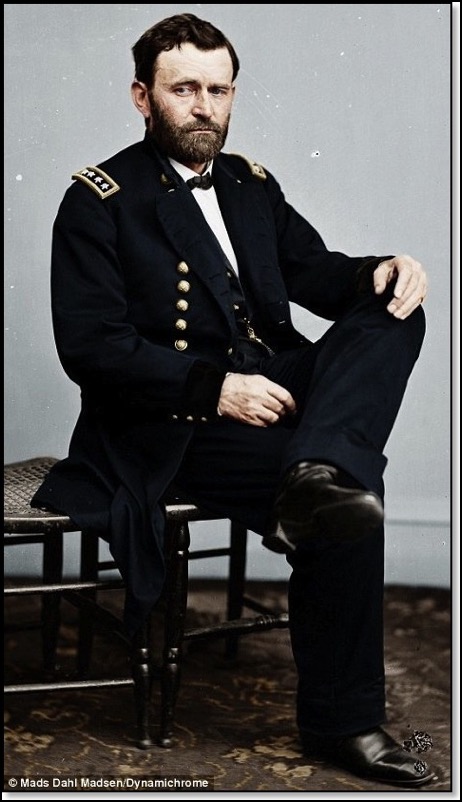
Happy explorations! A photo of General USS Grant.

Colorized Photos
18/08/13 09:47 Filed in: Interests
What a pleasure to view old black and white photos from the past that have been colorized.It gives the scene and past another perspective. Maybe the colorization brings the scene more into reality versus a remoteness when viewed. Here is a post with some examples, one from the Civil War era. An extended look of the group of photos is also here.
First Bull Run
25/07/13 09:49 Filed in: History
A good portion of the area where the Bull Run/Manassas battles took place are under freeways and shopping malls. They have managed to preserve some of the battlefield areas near Centreville in Virginia. Bob and I did visit this area when we traveled to Virginia Civil War sites in 2001. There were two different significant battles in this area, both were overall losses or routs for the Army of the Potomac. A good description of the First Bull Run battle is found here. I believe that the North liked to name battles after water source or geography close by and the South liked to name the battle after the town or community near where it took place.
Gettysburg Aftermath
06/07/13 08:58 Filed in: History
What followed Gettysburg? Armies retreating, burying the dead, tending to the injured. Lincoln attending a ceremony to honor the sacrifice of the dead soldiers and to deliver the Gettysburg Address. It was probably the most pithy and greatest speech ever given. We still consecrate those dead and remember 150 years later what happened on the ridges, dens, hilltops, and fields of Gettysburg.
Commemorative memorial to Lincoln at Gettysburg cemetery
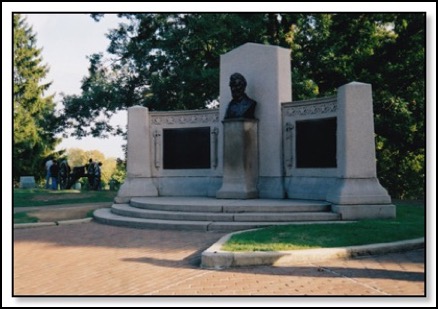
Gettysburg Address engraved at the Lincoln Memorial
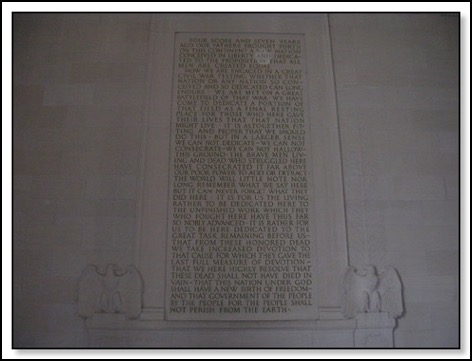
Battle of Gettysburg, Aftermath
On July 4, Lee started a 27-mile-long train of hospital wagons down the road to Virginia. His army halted at the flooded Potomac River and entrenched for another battle, but Meade’s army, too, was battered and exhausted and had consumed much of its ammunition. The Army of the Potomac did not pursue, for which Meade would be soundly criticized. He remained in command of that army for the rest of the war, even after Ulysses S. Grant was promoted to lieutenant general, placed over all Northern armies and attached himself to the Army of the Potomac. Lee offered his resignation to Confederate president Jefferson Davis, but it was refused and he, too, remained in command for the rest of the war.
Facts about the Battle of Gettysburg
Ammunition at Gettysburg: An estimated 569 tons of ammunition was fired during the three days of fighting.
Abraham Lincoln’s Gettysburg Address was delivered November 19, 1863, at the dedication of the “Soldiers’ National Cemetery” at Gettysburg. The speech was extremely short by the standards of the day and received scant notice at the time, but its concise, powerful wording has made it one of the best-known public addresses in all of history. Contrary to popular myth, Lincoln did not scribble the speech on the back of an envelope on his way to Gettysburg but wrote several drafts. The last bodies would not be retrieved from battlefield graves and reinterred in the cemetery until months after the dedication ceremonies.
John Buford, whose cavalry fired the first shots of the battle, died December 16, 1863. His death is thought to have resulted from typhoid fever and a body weakened by exhaustion. He received a deathbed promotion to major general, post-dated to July 1, 1863.
Civilians at Gettysburg were left to deal with the thousands of wounded. Homes and public buildings became hospitals, and diseases born of infection and unsanitary conditions made living in the town risky. Volunteers came from the North and the South, however, to aid in caring for the wounded, burying the dead, and piling and burning carcasses of horses and mules killed in the fighting.
During the battle, a random bullet went through the door of a house, striking and killing 20-year-old Mary Virginia (Jenny) Wade. She was the only civilian killed during the battle.
Commemorative memorial to Lincoln at Gettysburg cemetery

Gettysburg Address engraved at the Lincoln Memorial

Battle of Gettysburg, Aftermath
On July 4, Lee started a 27-mile-long train of hospital wagons down the road to Virginia. His army halted at the flooded Potomac River and entrenched for another battle, but Meade’s army, too, was battered and exhausted and had consumed much of its ammunition. The Army of the Potomac did not pursue, for which Meade would be soundly criticized. He remained in command of that army for the rest of the war, even after Ulysses S. Grant was promoted to lieutenant general, placed over all Northern armies and attached himself to the Army of the Potomac. Lee offered his resignation to Confederate president Jefferson Davis, but it was refused and he, too, remained in command for the rest of the war.
Facts about the Battle of Gettysburg
Ammunition at Gettysburg: An estimated 569 tons of ammunition was fired during the three days of fighting.
Abraham Lincoln’s Gettysburg Address was delivered November 19, 1863, at the dedication of the “Soldiers’ National Cemetery” at Gettysburg. The speech was extremely short by the standards of the day and received scant notice at the time, but its concise, powerful wording has made it one of the best-known public addresses in all of history. Contrary to popular myth, Lincoln did not scribble the speech on the back of an envelope on his way to Gettysburg but wrote several drafts. The last bodies would not be retrieved from battlefield graves and reinterred in the cemetery until months after the dedication ceremonies.
John Buford, whose cavalry fired the first shots of the battle, died December 16, 1863. His death is thought to have resulted from typhoid fever and a body weakened by exhaustion. He received a deathbed promotion to major general, post-dated to July 1, 1863.
Civilians at Gettysburg were left to deal with the thousands of wounded. Homes and public buildings became hospitals, and diseases born of infection and unsanitary conditions made living in the town risky. Volunteers came from the North and the South, however, to aid in caring for the wounded, burying the dead, and piling and burning carcasses of horses and mules killed in the fighting.
During the battle, a random bullet went through the door of a house, striking and killing 20-year-old Mary Virginia (Jenny) Wade. She was the only civilian killed during the battle.
Independence Day and Vicksburg
04/07/13 09:33 Filed in: History
We have not made it to Vicksburg to visit Civil War sites. Vicksburg did fall on this day 150 years ago to General Grant. Gettysburg had led to a defeat of the Confederate Army and its slow withdrawal from Pennsylvania back to Virginia.
One reason we can celebrate our Independence Day together as a country is due to the character and foresight of Abraham Lincoln. In some of the early Lincoln-Douglas debates, there is a speech from July 10,1858 where Lincoln replied to Douglas. As one column states, its eloquence concludes with what this Independence Day means to many Americans.
“Now, it happens that we meet together once every year, sometime about the 4th of July, for some reason or other. These 4th of July gatherings I suppose have their uses. If you will indulge me, I will state what I suppose to be some of them.
We are now a mighty nation, we are thirty—or about thirty millions of people, and we own and inhabit about one-fifteenth part of the dry land of the whole earth. We run our memory back over the pages of history for about eighty-two years and we discover that we were then a very small people in point of numbers, vastly inferior to what we are now, with a vastly less extent of country,—with vastly less of everything we deem desirable among men,—we look upon the change as exceedingly advantageous to us and to our posterity, and we fix upon something that happened away back, as in some way or other being connected with this rise of prosperity. We find a race of men living in that day whom we claim as our fathers and grandfathers; they were iron men, they fought for the principle that they were contending for; and we understood that by what they then did it has followed that the degree of prosperity that we now enjoy has come to us. We hold this annual celebration to remind ourselves of all the good done in this process of time of how it was done and who did it, and how we are historically connected with it; and we go from these meetings in better humor with ourselves—we feel more attached the one to the other, and more firmly bound to the country we inhabit. In every way we are better men in the age, and race, and country in which we live for these celebrations. But after we have done all this we have not yet reached the whole. There is something else connected with it. We have besides these men—descended by blood from our ancestors—among us perhaps half our people who are not descendants at all of these men, they are men who have come from Europe—German, Irish, French and Scandinavian—men that have come from Europe themselves, or whose ancestors have come hither and settled here, finding themselves our equals in all things. If they look back through this history to trace their connection with those days by blood, they find they have none, they cannot carry themselves back into that glorious epoch and make themselves feel that they are part of us, but when they look through that old Declaration of Independence they find that those old men say that “We hold these truths to be self-evident, that all men are created equal,” and then they feel that that moral sentiment taught in that day evidences their relation to those men, that it is the father of all moral principle in them, and that they have a right to claim it as though they were blood of the blood, and flesh of the flesh of the men who wrote that Declaration [loud and long continued applause], and so they are. That is the electric cord in that Declaration that links the hearts of patriotic and liberty-loving men together, that will link those patriotic hearts as long as the love of freedom exists in the minds of men throughout the world. [Applause.]
Now, sirs, for the purpose of squaring things with this idea of “don’t care if slavery is voted up or voted down” [Douglas's "popular sovereignty" position on the extension of slavery to the territories], for sustaining the Dred Scott decision [A voice---"Hit him again"], for holding that the Declaration of Independence did not mean anything at all, we have Judge Douglas giving his exposition of what the Declaration of Independence means, and we have him saying that the people of America are equal to the people of England. According to his construction, you Germans are not connected with it. Now I ask you in all soberness, if all these things, if indulged in, if ratified, if confirmed and endorsed, if taught to our children, and repeated to them, do not tend to rub out the sentiment of liberty in the country, and to transform this Government into a government of some other form. Those arguments that are made, that the inferior race are to be treated with as much allowance as they are capable of enjoying; that as much is to be done for them as their condition will allow. What are these arguments? They are the arguments that kings have made for enslaving the people in all ages of the world. You will find that all the arguments in favor of king-craft were of this class; they always bestrode the necks of the people, not that they wanted to do it, but because the people were better off for being ridden. That is their argument, and this argument of the Judge is the same old serpent that says you work and I eat, you toil and I will enjoy the fruits of it. Turn in whatever way you will—whether it come from the mouth of a King, an excuse for enslaving the people of his country, or from the mouth of men of one race as a reason for enslaving the men of another race, it is all the same old serpent, and I hold if that course of argumentation that is made for the purpose of convincing the public mind that we should not care about this, should be granted, it does not stop with the negro. I should like to know if taking this old Declaration of Independence, which declares that all men are equal upon principle and making exceptions to it where will it stop. If one man says it does not mean a negro, why not another say it does not mean some other man? If that declaration is not the truth, let us get the Statute book, in which we find it and tear it out! Who is so bold as to do it! [Voices---"me" "no one," &c.] If it is not true let us tear it out! [cries of "no, no,"] let us stick to it then [cheers], let us stand firmly by it then. [Applause.]”
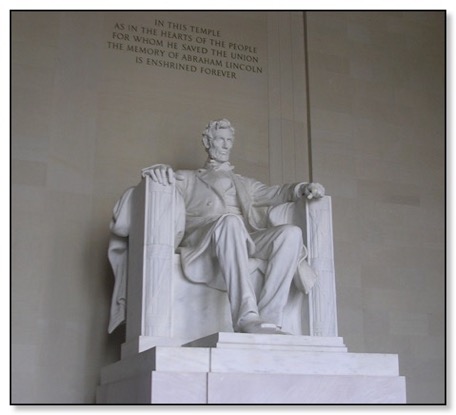
One reason we can celebrate our Independence Day together as a country is due to the character and foresight of Abraham Lincoln. In some of the early Lincoln-Douglas debates, there is a speech from July 10,1858 where Lincoln replied to Douglas. As one column states, its eloquence concludes with what this Independence Day means to many Americans.
“Now, it happens that we meet together once every year, sometime about the 4th of July, for some reason or other. These 4th of July gatherings I suppose have their uses. If you will indulge me, I will state what I suppose to be some of them.
We are now a mighty nation, we are thirty—or about thirty millions of people, and we own and inhabit about one-fifteenth part of the dry land of the whole earth. We run our memory back over the pages of history for about eighty-two years and we discover that we were then a very small people in point of numbers, vastly inferior to what we are now, with a vastly less extent of country,—with vastly less of everything we deem desirable among men,—we look upon the change as exceedingly advantageous to us and to our posterity, and we fix upon something that happened away back, as in some way or other being connected with this rise of prosperity. We find a race of men living in that day whom we claim as our fathers and grandfathers; they were iron men, they fought for the principle that they were contending for; and we understood that by what they then did it has followed that the degree of prosperity that we now enjoy has come to us. We hold this annual celebration to remind ourselves of all the good done in this process of time of how it was done and who did it, and how we are historically connected with it; and we go from these meetings in better humor with ourselves—we feel more attached the one to the other, and more firmly bound to the country we inhabit. In every way we are better men in the age, and race, and country in which we live for these celebrations. But after we have done all this we have not yet reached the whole. There is something else connected with it. We have besides these men—descended by blood from our ancestors—among us perhaps half our people who are not descendants at all of these men, they are men who have come from Europe—German, Irish, French and Scandinavian—men that have come from Europe themselves, or whose ancestors have come hither and settled here, finding themselves our equals in all things. If they look back through this history to trace their connection with those days by blood, they find they have none, they cannot carry themselves back into that glorious epoch and make themselves feel that they are part of us, but when they look through that old Declaration of Independence they find that those old men say that “We hold these truths to be self-evident, that all men are created equal,” and then they feel that that moral sentiment taught in that day evidences their relation to those men, that it is the father of all moral principle in them, and that they have a right to claim it as though they were blood of the blood, and flesh of the flesh of the men who wrote that Declaration [loud and long continued applause], and so they are. That is the electric cord in that Declaration that links the hearts of patriotic and liberty-loving men together, that will link those patriotic hearts as long as the love of freedom exists in the minds of men throughout the world. [Applause.]
Now, sirs, for the purpose of squaring things with this idea of “don’t care if slavery is voted up or voted down” [Douglas's "popular sovereignty" position on the extension of slavery to the territories], for sustaining the Dred Scott decision [A voice---"Hit him again"], for holding that the Declaration of Independence did not mean anything at all, we have Judge Douglas giving his exposition of what the Declaration of Independence means, and we have him saying that the people of America are equal to the people of England. According to his construction, you Germans are not connected with it. Now I ask you in all soberness, if all these things, if indulged in, if ratified, if confirmed and endorsed, if taught to our children, and repeated to them, do not tend to rub out the sentiment of liberty in the country, and to transform this Government into a government of some other form. Those arguments that are made, that the inferior race are to be treated with as much allowance as they are capable of enjoying; that as much is to be done for them as their condition will allow. What are these arguments? They are the arguments that kings have made for enslaving the people in all ages of the world. You will find that all the arguments in favor of king-craft were of this class; they always bestrode the necks of the people, not that they wanted to do it, but because the people were better off for being ridden. That is their argument, and this argument of the Judge is the same old serpent that says you work and I eat, you toil and I will enjoy the fruits of it. Turn in whatever way you will—whether it come from the mouth of a King, an excuse for enslaving the people of his country, or from the mouth of men of one race as a reason for enslaving the men of another race, it is all the same old serpent, and I hold if that course of argumentation that is made for the purpose of convincing the public mind that we should not care about this, should be granted, it does not stop with the negro. I should like to know if taking this old Declaration of Independence, which declares that all men are equal upon principle and making exceptions to it where will it stop. If one man says it does not mean a negro, why not another say it does not mean some other man? If that declaration is not the truth, let us get the Statute book, in which we find it and tear it out! Who is so bold as to do it! [Voices---"me" "no one," &c.] If it is not true let us tear it out! [cries of "no, no,"] let us stick to it then [cheers], let us stand firmly by it then. [Applause.]”

Gettysburg at 150, Third Day
03/07/13 16:03 Filed in: History
The last day of the battle………….Pickett’s Charge. One last push that was never enough. Lee gambled and his soldiers paid this day 150 years ago. More than one mile across the fields from Seminary Ridge, the Emmitsburg Road to the stone wall and The Angle. They almost made it, yet the Union held.
Looking toward Seminary Ridge from the stone wall, Pickett’s Charge
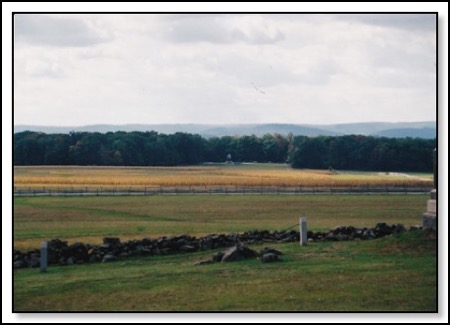
Clash of colours and cultures, the high watermark, at The Angle
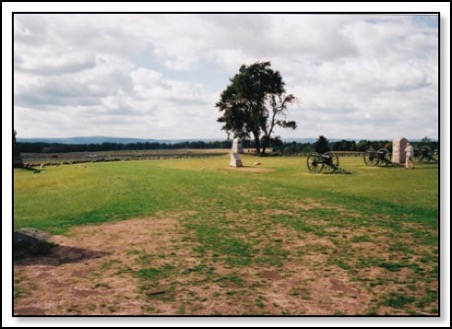
Gettysburg, Day 3
Throughout the war, Robert E. Lee had always sought a way to “get at those people over there.” His aggressiveness had served the Confederate cause well on many battlefields, but on July 3, 1863, it led to disaster.
Despite the passionate arguments of Longstreet, Lee instructed his “Old War Horse” to strike the Union center on Cemetery Ridge, using the divisions of Brig. Gen. James Johnston Pettigrew, Maj. Gen. Isaac Ridgeway Trimble, and the recently arrived division of Maj. Gen. George Pickett. In all, approximately 15,000 men were to advance three-quarters of a mile across open ground, climb fences along the roads, and charge up the gradual but steep slope of Cemetery Ridge to assail a force of about 6,500, but the Federals had reinforcements close by.
At 1:00 in the afternoon, a prolonged artillery barrage by the Confederates, utilizing an unprecedented number of guns spread two miles wide, preceded the assault, intended to silence the Union’s cannons and weaken the infantry. Most of its shells went high, plunging to earth behind the Federals’ line, though some found their mark. One nearly struck Meade, standing outside his headquarters.
For a time, Federal guns replied, until the order came down to conserve ammunition for the attack that was obviously coming. When the Union cannons fell silent, Lee’s artillery chief, Col. Edward Porter Alexander, sent word for Longstreet to bring up his men.
Pettigrew’s division of four brigades formed the left of the attack line, with two of Trimble’s brigades behind them and to their right for support. Pickett’s men stepped out on the right.
The advance was disordered by terrain and by flanking fire on Pettigrew’s left as it neared the Union line. Pickett’s advance drifted left, exposing his right to enemy fire. Through shot, shell, canister and rifle fire, the long Confederate line surged forward. Near the Union center, it broke through temporarily until reinforcements drove it back. As the survivors straggled back to Confederate lines at Seminary Ridge, many of them passed Robert E. Lee, who told them, “It is my fault.”
The day also saw cavalry action, as the horsemen of brigadier generals George Custer and David Gregg stymied Stuart’s attempt to get into the Union rear..
- See more at:
Looking toward Seminary Ridge from the stone wall, Pickett’s Charge

Clash of colours and cultures, the high watermark, at The Angle

Gettysburg, Day 3
Throughout the war, Robert E. Lee had always sought a way to “get at those people over there.” His aggressiveness had served the Confederate cause well on many battlefields, but on July 3, 1863, it led to disaster.
Despite the passionate arguments of Longstreet, Lee instructed his “Old War Horse” to strike the Union center on Cemetery Ridge, using the divisions of Brig. Gen. James Johnston Pettigrew, Maj. Gen. Isaac Ridgeway Trimble, and the recently arrived division of Maj. Gen. George Pickett. In all, approximately 15,000 men were to advance three-quarters of a mile across open ground, climb fences along the roads, and charge up the gradual but steep slope of Cemetery Ridge to assail a force of about 6,500, but the Federals had reinforcements close by.
At 1:00 in the afternoon, a prolonged artillery barrage by the Confederates, utilizing an unprecedented number of guns spread two miles wide, preceded the assault, intended to silence the Union’s cannons and weaken the infantry. Most of its shells went high, plunging to earth behind the Federals’ line, though some found their mark. One nearly struck Meade, standing outside his headquarters.
For a time, Federal guns replied, until the order came down to conserve ammunition for the attack that was obviously coming. When the Union cannons fell silent, Lee’s artillery chief, Col. Edward Porter Alexander, sent word for Longstreet to bring up his men.
Pettigrew’s division of four brigades formed the left of the attack line, with two of Trimble’s brigades behind them and to their right for support. Pickett’s men stepped out on the right.
The advance was disordered by terrain and by flanking fire on Pettigrew’s left as it neared the Union line. Pickett’s advance drifted left, exposing his right to enemy fire. Through shot, shell, canister and rifle fire, the long Confederate line surged forward. Near the Union center, it broke through temporarily until reinforcements drove it back. As the survivors straggled back to Confederate lines at Seminary Ridge, many of them passed Robert E. Lee, who told them, “It is my fault.”
The day also saw cavalry action, as the horsemen of brigadier generals George Custer and David Gregg stymied Stuart’s attempt to get into the Union rear..
- See more at:
Gettysburg at 150, Second Day
02/07/13 09:43 Filed in: History
The second day was the bloodiest day of the three at Gettysburg. The Union soldiers had retreated and dug in on Cemetery Ridge, Little Round Top, and Culp’s Hill. Battles such as at the Peach Orchard, the Wheat field, and Devil’s Den occurred. Following are photos from some of these areas.
Devil’s Den
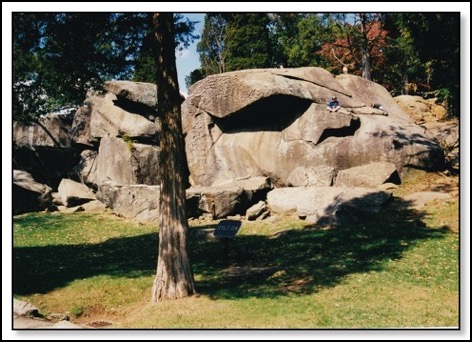
Soldiers for re-enactments at Gettysburg near the Peach Orchard
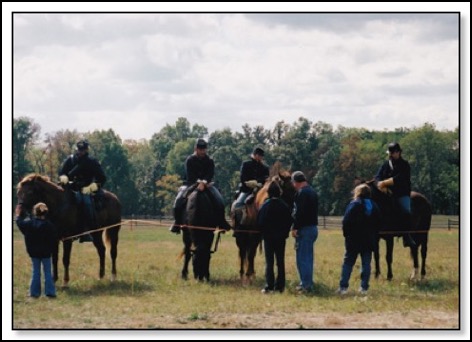
Gettysburg, Day 2
James Longstreet’s corps had arrived, and his 20,000 men were sent to outflank the Union left, which was anchored to the south by two eminences known as Little Round Top and Big Round Top. But the Federals had failed to place troops upon those hills, as Lee learned from an early morning reconnaissance report. Ewell was to make a demonstration against Culp’s and Cemetery hills on the Union right and to use his own discretion about launching a full-scale attack.
Longstreet’s men, moving toward their objective, had to reverse, countermarch and take a different route after Brigadier General Lafayette McLaws discovered the planned route would put them in full view of the Federals, negating any advantage of surprise. This cost valuable time but, as events turned out, a Union general was about to present them an unexpected opportunity.
Read More in America’s Civil War Magazine
Subscribe online and save nearly 40%!!!
All but one of Meade’s seven corps were now on the field, deployed in a fish-hook shape with its center along Cemetery Ridge; the defensive positions on Culp’s and Cemetery hills formed the hook at one end. The left was held by Major General Daniel Sickles, who owed his military rank to his political importance in the essential state of New York.
Dissatisfied with his position at the lower end of Cemetery Ridge, he took it upon himself to advance his III Corps nearly a half-mile west toward the Emmitsburg Pike and open high ground in a wheat field near a peach orchard. The move dangerously stretched his 10,000-man corps. Longstreet’s men attacked Sickle’s new position, and the fighting at rocky Devil’s Den, the wheat field and the peach orchard was among the fiercest and bloodiest of the three days.
Meade, faced with Sickles’ blunder, sent V Corps and part of the XI to reinforce him. New York’s Irish Brigade received Last Rites from a Catholic priest before charging into the fray; 198 of them would not return from the desperate fighting in the hot, sultry afternoon.
Above the blood-soaked fields, a similar drama was playing out on Little Round Top. Around 4:30 p.m., men of Alabama, Texas and Arkansas, from John Bell Hood’s Division in Longstreet’s Corps, began ascending the steep hill from the west. Had they arrived two hours earlier, they would have captured the heights unopposed, but by the time they arrived Meade’s chief of engineers, Brig. Gen. Gouveneur K. Warren, had discovered the potentially disastrous situation and sent messages to Sickles, who could not send even a single regiment by that time.
One message found its way to Colonel Strong Vincent, commanding 3rd Brigade, 1st Division, of the Federals’ V Corps. He double-timed his men and deployed them among the rocks and trees of Little Round Top’s western and southern slopes. The fate of the Union Army, at that moment, rested on the shoulders of 1,350 men of the 83rd Pennsylvania, 44th New York, 16th Michigan and 20th Maine regiments. Vincent’s orders were to “hold this ground at all costs!”
Nearly 650 Rebels of the 15th Alabama stormed into the saddle between the Round Tops around 6:00 p.m., and into the muzzles of Colonel Joshua Chamberlain’s 20th Maine. After an hour of intense fighting, Chamberlain’s 300-plus men had nearly exhausted their 15,000 rounds of ammunition. He ordered a countercharge. The surprised Alabamians fell back and attempted to make a stand, but Company B of the 20th Maine, which had been detached to cover the regiment’s flank, and fourteen of Hiram Berdan’s Sharpshooters rose from behind a stone wall and charged the Confederates’ flank. Convinced they were outnumbered, the men of the 15th and 47th Alabama retreated onto Big Round Top.
On the western slope, Colonel Vincent’s other regiments also stood firm until part of the 16th Michigan was pushed back. Gouvenor Warren, receiving a plea for reinforcements, ordered the 140th New York Zouaves to charge, and they broke the Rebels’ line long enough for more reinforcements to arrive.
By the time the sun went down on the second day at Gettysburg, the Union left still held, but III Corps would no longer be a significant factor in the battle, and V Corps had been badly mauled. Meanwhile, a desperate contest was taking place on the slope of Cemetery Hill.
Ewell’s troops had advanced from around the town of Gettysburg to assault Culp’s and Cemetery hills. For an hour they struggled across rough ground while Union batteries threw shot and shell among them, but when they got far enough up the slopes, the Federals could not depress their barrels enough to fire into them, and the Rebels routed infantry of the XI Corps. Union regiments pulled from one area of Cemetery Hill to plug a gap created by the retreat created their own gap, and Confederate infantry poured through.
Down on Cemetery Ridge, Winfield Hancock sent the 14th Indiana and 7th West Virginia regiments to reinforce Cemetery Hill. Arriving after dark, they formed up and charged into the Rebels who were fighting with artillerymen around the Union guns. The Confederates fell back. In one of the ironic events of the war, the 7th West Virginia, which had been the 7th Virginia (Union) until June 20 when West Virginia was admitted as a state, fought hand to hand with the 7th Virginia of the Confederacy, capturing a nephew of their own regimental commander.
The long day of bloodshed finally ended. Meade called together his commanders for a council of war. He’d already sent a message to the War Department stating that he intended to stay and fight; he may have called the council in order to make sure no one would do the next day what Sickles had done. Meade’s army had been attacked on the left and the right; that fact, combined with other intelligence he’d received, led him to believe his center would be the target the next day.
Read more about General Lee’s plan for Gettysburg Day 2
- See more at:
Devil’s Den

Soldiers for re-enactments at Gettysburg near the Peach Orchard

Gettysburg, Day 2
James Longstreet’s corps had arrived, and his 20,000 men were sent to outflank the Union left, which was anchored to the south by two eminences known as Little Round Top and Big Round Top. But the Federals had failed to place troops upon those hills, as Lee learned from an early morning reconnaissance report. Ewell was to make a demonstration against Culp’s and Cemetery hills on the Union right and to use his own discretion about launching a full-scale attack.
Longstreet’s men, moving toward their objective, had to reverse, countermarch and take a different route after Brigadier General Lafayette McLaws discovered the planned route would put them in full view of the Federals, negating any advantage of surprise. This cost valuable time but, as events turned out, a Union general was about to present them an unexpected opportunity.
Read More in America’s Civil War Magazine
Subscribe online and save nearly 40%!!!
All but one of Meade’s seven corps were now on the field, deployed in a fish-hook shape with its center along Cemetery Ridge; the defensive positions on Culp’s and Cemetery hills formed the hook at one end. The left was held by Major General Daniel Sickles, who owed his military rank to his political importance in the essential state of New York.
Dissatisfied with his position at the lower end of Cemetery Ridge, he took it upon himself to advance his III Corps nearly a half-mile west toward the Emmitsburg Pike and open high ground in a wheat field near a peach orchard. The move dangerously stretched his 10,000-man corps. Longstreet’s men attacked Sickle’s new position, and the fighting at rocky Devil’s Den, the wheat field and the peach orchard was among the fiercest and bloodiest of the three days.
Meade, faced with Sickles’ blunder, sent V Corps and part of the XI to reinforce him. New York’s Irish Brigade received Last Rites from a Catholic priest before charging into the fray; 198 of them would not return from the desperate fighting in the hot, sultry afternoon.
Above the blood-soaked fields, a similar drama was playing out on Little Round Top. Around 4:30 p.m., men of Alabama, Texas and Arkansas, from John Bell Hood’s Division in Longstreet’s Corps, began ascending the steep hill from the west. Had they arrived two hours earlier, they would have captured the heights unopposed, but by the time they arrived Meade’s chief of engineers, Brig. Gen. Gouveneur K. Warren, had discovered the potentially disastrous situation and sent messages to Sickles, who could not send even a single regiment by that time.
One message found its way to Colonel Strong Vincent, commanding 3rd Brigade, 1st Division, of the Federals’ V Corps. He double-timed his men and deployed them among the rocks and trees of Little Round Top’s western and southern slopes. The fate of the Union Army, at that moment, rested on the shoulders of 1,350 men of the 83rd Pennsylvania, 44th New York, 16th Michigan and 20th Maine regiments. Vincent’s orders were to “hold this ground at all costs!”
Nearly 650 Rebels of the 15th Alabama stormed into the saddle between the Round Tops around 6:00 p.m., and into the muzzles of Colonel Joshua Chamberlain’s 20th Maine. After an hour of intense fighting, Chamberlain’s 300-plus men had nearly exhausted their 15,000 rounds of ammunition. He ordered a countercharge. The surprised Alabamians fell back and attempted to make a stand, but Company B of the 20th Maine, which had been detached to cover the regiment’s flank, and fourteen of Hiram Berdan’s Sharpshooters rose from behind a stone wall and charged the Confederates’ flank. Convinced they were outnumbered, the men of the 15th and 47th Alabama retreated onto Big Round Top.
On the western slope, Colonel Vincent’s other regiments also stood firm until part of the 16th Michigan was pushed back. Gouvenor Warren, receiving a plea for reinforcements, ordered the 140th New York Zouaves to charge, and they broke the Rebels’ line long enough for more reinforcements to arrive.
By the time the sun went down on the second day at Gettysburg, the Union left still held, but III Corps would no longer be a significant factor in the battle, and V Corps had been badly mauled. Meanwhile, a desperate contest was taking place on the slope of Cemetery Hill.
Ewell’s troops had advanced from around the town of Gettysburg to assault Culp’s and Cemetery hills. For an hour they struggled across rough ground while Union batteries threw shot and shell among them, but when they got far enough up the slopes, the Federals could not depress their barrels enough to fire into them, and the Rebels routed infantry of the XI Corps. Union regiments pulled from one area of Cemetery Hill to plug a gap created by the retreat created their own gap, and Confederate infantry poured through.
Down on Cemetery Ridge, Winfield Hancock sent the 14th Indiana and 7th West Virginia regiments to reinforce Cemetery Hill. Arriving after dark, they formed up and charged into the Rebels who were fighting with artillerymen around the Union guns. The Confederates fell back. In one of the ironic events of the war, the 7th West Virginia, which had been the 7th Virginia (Union) until June 20 when West Virginia was admitted as a state, fought hand to hand with the 7th Virginia of the Confederacy, capturing a nephew of their own regimental commander.
The long day of bloodshed finally ended. Meade called together his commanders for a council of war. He’d already sent a message to the War Department stating that he intended to stay and fight; he may have called the council in order to make sure no one would do the next day what Sickles had done. Meade’s army had been attacked on the left and the right; that fact, combined with other intelligence he’d received, led him to believe his center would be the target the next day.
Read more about General Lee’s plan for Gettysburg Day 2
- See more at:
Gettysburg at 150, First Day
01/07/13 21:23 Filed in: History
In 2001, shortly after 9-11 we traveled back to Philadelphia for a meeting. Afterwards, we spent time in parts of Pennsylvania, Washington DC, and Virginia. The major part of Pennsylvania was a visit to the Gettysburg Battlefield. What a special memory! We did a driving tour with audio (we still have the audio to listen to) around the various sites. It was a great overview though one never does get in everything. Today is the 150th anniversary of the first day of battle at Gettysburg.
Here is a modern day photo of the driving lane and monuments along the ridge where the first sightings and skirmishes occurred between the Boys in Blue and the Johnny Rebs. Did General Ewell lose the battle on this day by his actions? This area of McPherson’s Ridge was near to where we stayed in a B&B.
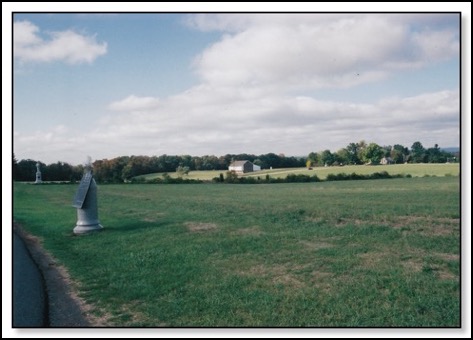
The town of Gettysburg, PA as you come up to it. It has much the same flavor as it must have in the days before the battle.
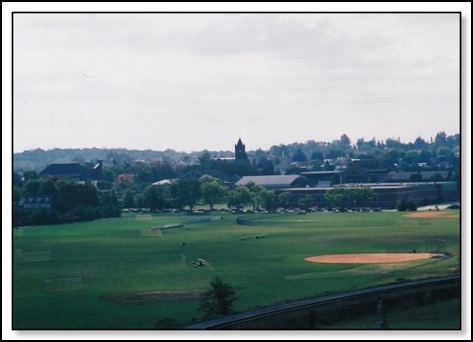
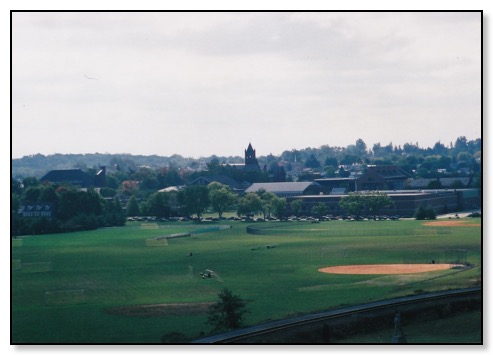
Gettysburg, Day 1
On the morning of July 1, Major General Henry Heth, of A.P. Hill’s Third Corps, sent his 7,500-man division down the Chambersburg Pike toward Gettysburg. Encountering resistance, they initially assumed it was more of the hastily assembled Pennsylvania Emergency Militia that they’d been skirmishing with during the campaign.
In reality, Colonel John Buford had deployed part of two brigades of Union cavalry as skirmishers in the brush along Willoughby’s Run three miles west of town. Just two weeks previously, they’d been issued breech-loading carbines, and they used the guns’ fast-loading capability to create the impression of a much larger force, slowing the advance of Hill’s brigades for a time before falling back.
The Confederates followed them across the stream, only to meet a line of Union infantry on McPherson’s Ridge. The Army of the Potomac was arriving piecemeal, and among the first to arrive was a brigade of Western regiments that had earned the nickname “Iron Brigade of the West.” Confederates recognized these “fellows in the black hats” and realized they were in for a rougher day than expected.
Union major general John Reynolds, commander of the left wing of the Army of the Potomac (I, III and XI corps), arrived and took charge of the defense. His men fought tenaciously, and Reynolds was shot dead during the fighting.
From his headquarters at Taneytown, Meade dispatched Major General Winfield Scott Hancock to take command at Gettysburg—although Major General O. O. Howard was already on the field—and assess whether or not the battle should be fought there. Hancock, seeing the strong defensive position offered by the hills near Gettysburg, chose to stand, and Meade ordered the other corps to the little crossroads town.
By afternoon, Confederate reinforcements had also arrived, and the general engagement Lee hadn’t wanted at this stage of the campaign was a fait accompli.
The Union’s XI Corps was driven back through the town of Gettysburg, losing 4,000 men, and by evening was entrenching on Culp’s and Cemetery hills south of town.
Lee expressed a desire for General Ewell to assault the hills without waiting for further reinforcement, but he failed to make it an express order. Ewell did not press his tired men forward, giving Meade time to reinforce the troops on the hills.
- See more at:
Here is a modern day photo of the driving lane and monuments along the ridge where the first sightings and skirmishes occurred between the Boys in Blue and the Johnny Rebs. Did General Ewell lose the battle on this day by his actions? This area of McPherson’s Ridge was near to where we stayed in a B&B.

The town of Gettysburg, PA as you come up to it. It has much the same flavor as it must have in the days before the battle.


Gettysburg, Day 1
On the morning of July 1, Major General Henry Heth, of A.P. Hill’s Third Corps, sent his 7,500-man division down the Chambersburg Pike toward Gettysburg. Encountering resistance, they initially assumed it was more of the hastily assembled Pennsylvania Emergency Militia that they’d been skirmishing with during the campaign.
In reality, Colonel John Buford had deployed part of two brigades of Union cavalry as skirmishers in the brush along Willoughby’s Run three miles west of town. Just two weeks previously, they’d been issued breech-loading carbines, and they used the guns’ fast-loading capability to create the impression of a much larger force, slowing the advance of Hill’s brigades for a time before falling back.
The Confederates followed them across the stream, only to meet a line of Union infantry on McPherson’s Ridge. The Army of the Potomac was arriving piecemeal, and among the first to arrive was a brigade of Western regiments that had earned the nickname “Iron Brigade of the West.” Confederates recognized these “fellows in the black hats” and realized they were in for a rougher day than expected.
Union major general John Reynolds, commander of the left wing of the Army of the Potomac (I, III and XI corps), arrived and took charge of the defense. His men fought tenaciously, and Reynolds was shot dead during the fighting.
From his headquarters at Taneytown, Meade dispatched Major General Winfield Scott Hancock to take command at Gettysburg—although Major General O. O. Howard was already on the field—and assess whether or not the battle should be fought there. Hancock, seeing the strong defensive position offered by the hills near Gettysburg, chose to stand, and Meade ordered the other corps to the little crossroads town.
By afternoon, Confederate reinforcements had also arrived, and the general engagement Lee hadn’t wanted at this stage of the campaign was a fait accompli.
The Union’s XI Corps was driven back through the town of Gettysburg, losing 4,000 men, and by evening was entrenching on Culp’s and Cemetery hills south of town.
Lee expressed a desire for General Ewell to assault the hills without waiting for further reinforcement, but he failed to make it an express order. Ewell did not press his tired men forward, giving Meade time to reinforce the troops on the hills.
- See more at:
Lincoln Unbound
12/06/13 09:16 Filed in: History
It is probably easy to detect that one person in history I admire greatly was Abraham Lincoln. Much has been written about him, his life, his character, his beliefs………. There is a new book out today by Rich Lowry that focuses on what beliefs formed his character and actions. Here is a description of the book by the author.
Grant Is No Butcher
20/05/13 21:26 Filed in: History
A Civil War scholar named Gordon C. Rhea has determined through research that Grant’s Overland Campaign of 1864 in Virginia has a different set of facts. He believes his research shows that Grant only lost closer to 20% of the men at Cold Harbor than previous understanding claimed. Rhea has written a collection of books on this part of the Civil War and is considered a voice to be heard. To learn more about his work, please go here.
For additional historical information about the battle near Spotsylvania Courthouse, you can read about it from the Civil War Trust site here.
For additional historical information about the battle near Spotsylvania Courthouse, you can read about it from the Civil War Trust site here.
The Wilderness
18/05/13 09:35 Filed in: History
Another interesting battle that occurred in Northern Virginia in early May, 1864 was the battle of The Wilderness. It is a tangled web of trees and undergrowth in Spotsylvania County of Virginia. Close to the area where Jackson lost his life at Chancellorsville. More can be read here.
The Battle of the Wilderness, fought May 5–6, 1864, was the opening engagement of the Overland Campaign during the American Civil War (1861–1865). The newly appointed general-in-chief of the Union armies, Ulysses S. Grant, personally led the Army of the Potomac south across the Rapidan River in what he hoped would be a quick maneuver around the right flank of Confederate general Robert E. Lee and his Army of Northern Virginia.
The battle ended up as a number of tactical setbacks for Grant and his army. Yet, he did not accept defeat. Grant’s ultimate success was that he kept moving forward, determined to reach his goals. He reminds a person that it is best to less focus on what the other guy is doing than what you are going to do to achieve success.
Although disappointed by the tactical setbacks, Grant refused to accept defeat, and in doing so transformed the battle into a strategic victory for the Union. When a general worried about Lee's next move, Grant tersely replied, "I am heartily tired of hearing what Lee is going to do. Some of you always seem to think he is suddenly going to turn a double somersault, and land on our rear and on both our flanks at the same time. Go back to your command, and try to think what we are going to do ourselves, instead of what Lee is going to do."
The Battle of the Wilderness, fought May 5–6, 1864, was the opening engagement of the Overland Campaign during the American Civil War (1861–1865). The newly appointed general-in-chief of the Union armies, Ulysses S. Grant, personally led the Army of the Potomac south across the Rapidan River in what he hoped would be a quick maneuver around the right flank of Confederate general Robert E. Lee and his Army of Northern Virginia.
The battle ended up as a number of tactical setbacks for Grant and his army. Yet, he did not accept defeat. Grant’s ultimate success was that he kept moving forward, determined to reach his goals. He reminds a person that it is best to less focus on what the other guy is doing than what you are going to do to achieve success.
Although disappointed by the tactical setbacks, Grant refused to accept defeat, and in doing so transformed the battle into a strategic victory for the Union. When a general worried about Lee's next move, Grant tersely replied, "I am heartily tired of hearing what Lee is going to do. Some of you always seem to think he is suddenly going to turn a double somersault, and land on our rear and on both our flanks at the same time. Go back to your command, and try to think what we are going to do ourselves, instead of what Lee is going to do."
Antietam's Bloody Lane
17/05/13 08:06 Filed in: History
Back in 2001, Bob and I made a tour of the countryside and Civil War battlefields of Pennsylvania, Maryland, West Virginia, and Virginia. In those days, I had my Olympus OM-2 film 35mm camera. It was not the digital age. I have slowly been scanning my photos of the trip onto my computer in digital format. One of my favorites from the trip was a view of the Sunken Road or Bloody Lane at the Antietam (Sharpsburg) Battlefield in Maryland. We have visited the area twice and it always impresses and haunts us. Antietam was the one battle and day even including September 11, 2001 where the largest loss of American lives occurred. More than 3500 souls perished on that day. The Bloody Lane was an area piled high with bodies at that time, 5600 dead and wounded. Hard to envision in such a peaceful, beautiful setting that it is now. A description of this part of the battle is found here in video.
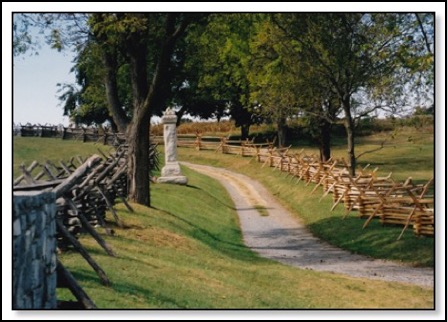
Antietam (Sharpsburg MD)

Antietam (Sharpsburg MD)
Shenandoah
05/05/13 11:33 Filed in: History
On the trip Bob and I made around Virginia included visiting part of the Shenandoah Valley and driving the Shenandoah Parkway. We stayed overnight in Front Royal and drove down the Valley to Harrisonburg and Stanton. This area was a large focus in 1862 of the Shenandoah campaign of the Union and “Stonewall” Jackson’s campaign to deny the Union the use of the Valley and also divert attention from Richmond. He was very successful in doing so. A good yet succinct description of the battles and campaign are noted in this article.
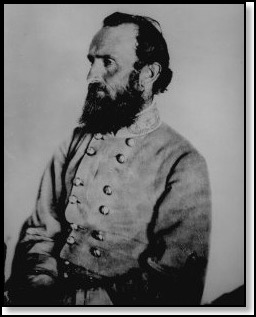
Gen. T. J. “Stonewall” Jackson

Gen. T. J. “Stonewall” Jackson
Top 12 Civil War Books
03/05/13 08:23 Filed in: History
Another spot to get a good source of heavy reading, check out this site where the author lists his Top 12 Books on the Civil War. We should have some of these books. Bob just finished and enjoyed The Warrior Generals. He said the author liked General Thomas on the Union side as an exemplary general, above Grant and Lee. Interesting. All of the books in the list have been written since World War II so the list does not take into account other great works before that time.
Some of the list we have:
“The American Heritage Picture History of the Civil War”
“Battle Cry of Freedom: The Civil War Era”
“A Stillness at Appomattox”
“Confederates in the Attic: Dispatches From the Unfinished Civil War”
Some of the list we have:
“The American Heritage Picture History of the Civil War”
“Battle Cry of Freedom: The Civil War Era”
“A Stillness at Appomattox”
“Confederates in the Attic: Dispatches From the Unfinished Civil War”
Chancellorsville
02/05/13 09:50 Filed in: History
As a history buff, there are a number of interesting articles regarding the battle of Chancellorsville in Northern Virginia in May of 1863. Bob and I drove the battle site areas a number of years ago. It covers a large area and many miles of roads to the different viewing spots. The area is densely wooded as described from the history of the times. A number of articles about what happened then are found here and here. Maps of the area are located here.
Gettysburg This Summer
14/04/13 16:03 Filed in: History
On July 1 this summer, it will be the 150th anniversary of the Battle of Gettysburg. Bob and I were fortunate to visit Gettysburg and be able over a few days to travel the battle sites. It was a great experience. I remember being on Little Round Top looking across the way to where so many Confederate soldiers came to attack Union soldiers dug in on this hill. The Cornfield……The Peach Orchard…….The Bloody Angle…..where Pickett marched his troops. So much history, so much sadness. A short article explains how such a visit becomes a part of America’s soul to those who visit and those who wish to visit.
